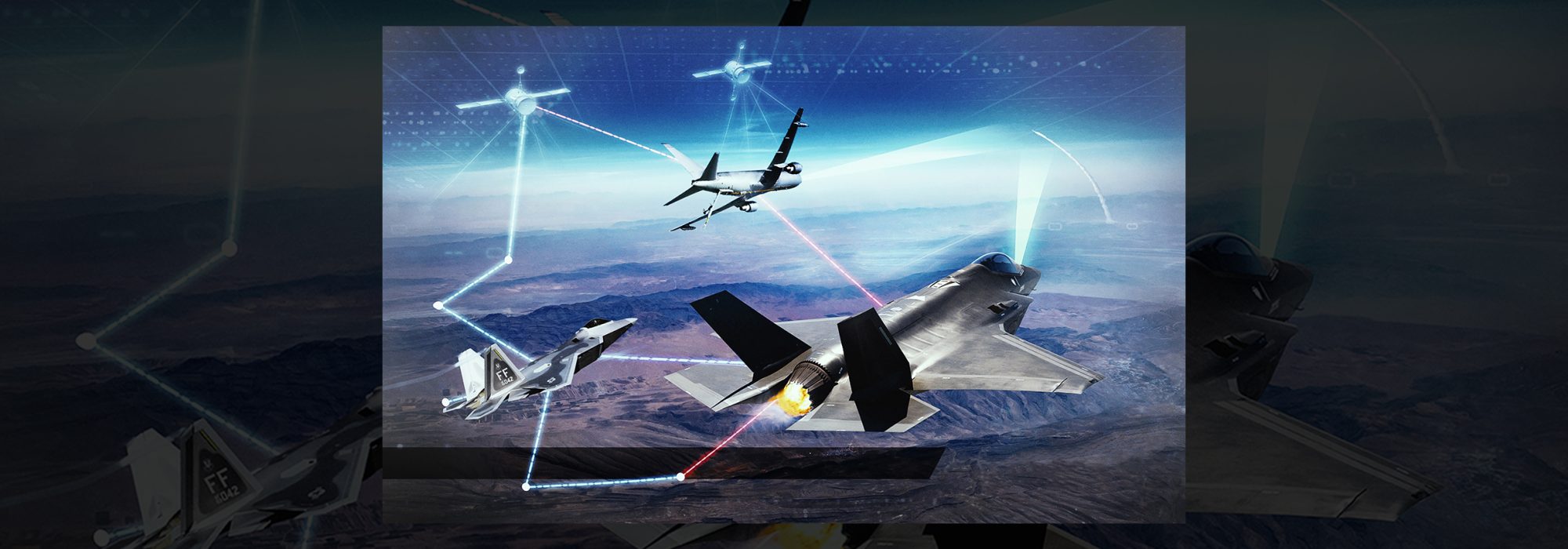Operationally Focused ABMS
The U.S. military sees networked data capabilities as the foundation of its strategy to counter China and Russia in a world of intensified competition. The vision is compelling: Data from sensors in the air, on land, at sea, and in space could be shared seamlessly among weapons systems, shortening kill cycles and increasing defensive complexity for adversaries.
Originally conceived as “multidomain warfare,” the concept evolved over time to be known first as joint all-domain command and control (JADC2) and then, earlier this year, the Department of Defense tacked on “combined” in front, recognizing the importance of operations involving international partners.
CHALLENGE: We must identify and invest in the specific applications of ABMS that provide a measurable operational advantage to our warfighters.


APPROACH: The Department must move beyond conceptual demonstrations and experiments to focus its investments on specific capabilities with clear, quantifiable mission value and operational impact.
Under the Pentagon’s plan, each service is responsible for developing a portion of the CJADC2 ecosystem; the Department of the Air Force’s piece is the Advanced Battle Management System (ABMS).
Secretary of the Air Force Frank Kendall has noted that complex command and control efforts have historically overpromised and underdelivered. Before his arrival at Department headquarters, the Air Force was engaged in a series of ABMS experiments, which Kendall deemed “just a demonstration that you show what cool thing you could do,” but not meaningful operational capabilities commanders could rely on for combat.
When Kendall rolled out his seven Operational Imperatives in March 2022, “Operationally Focused ABMS” was high on the list.
“One of the findings of the operational imperative work to date is, we have not appreciated the scale of the effort needed to modernize,” Kendall said at AFA’s Air, Space, and Cyber Conference in September 2022. “Our efforts to date have not been adequately focused, nor have they been adequately integrated.”
Kendall appointed Brig. Gen. Luke C.G. Cropsey to be the department’s point man for command, control, communications battle management (C3BM) and ABMS efforts.
Cropsey is the third person to head ABMS acquisition efforts since 2019, his focus distinguishing what is feasible from what is fantasy.
“If you turn engineers loose without supervision, they will absolutely, guaranteed find a solution for which you have no problem,” Cropsey said in July. “So our first order of business was to make sure that we were solving a real problem that mattered fundamentally.”
Speaking to reporters in November, Cropsey described his challenge this way: “The technical integration challenge that we have is how do we combine all those different parts and pieces across that whole kill chain—across those find, fix, track, target, engage, and assessment activities—so that we can make the effects that we need to happen actually a reality.” Kendall envisions a future in which major command and control centers can be more distributed and less vulnerable than the major air operations centers the Air Force runs in Hawaii and Qatar.
“We have to move away from the AOC, the current concept as he outlined the department’s fiscal 2024 budget request. “We’re still doing the engineering work to define exactly what those are going to be.”
Yet another problem is efficiently connecting Air Force technology with systems devised by and for the other services, noted the Government Accountability Office in a January 2023 report: “Each military department often produces its own solutions for command and control and other military departments may not be aware of ongoing efforts.”
Even as straightforward as just controlling airspace can be a problem. At a Project Convergence exercise last year at Fort Irwin, Calif., Army Chief of Staff Gen. James C. McConville, an advocate for connecting battlefield sensors and shooters, complained about the “industrial age” approach to managing airspace among crewed and uncrewed aircraft and surface-fired rockets.
Project Convergence made clear how much further the services need to go. “It’s complicated,” Kendall said. “There are a lot of players in the game, and getting everybody in line is going to be tough.”
China and Russia both prioritize neutralizing U.S. command and control systems as a means to take away a vital U.S. advantage. To counteract that, ABMS must be designed to operate in the face of cyberattacks and electronic jamming, not to mention long-range fires designed to shoot down airborne platforms. The Air Force is retiring aging E-3 Sentry AWACS airborne command and control aircraft in favor of the E-7 Wedgetail, while E-8 JSTARS aircraft will go away entirely, with much of that mission shifting to space-based capabilities.
That means the Space Force may take on a battle management role, “which is an entirely new capability for it,” according to Kendall.
But the Space Force’s role means there will be even more systems to integrate.
About the same time Cropsey came into his role, the Department of the Air Force conceived of the ABMS Digital Infrastructure, essentially a digital backbone for linking a plethora of systems. The Air Force is seeking software-defined network technologies to enable a rapidly reconfigurable, secure network to connect senors and C2 systems.
“If you don’t have the digital infrastructure that allows you to connect the things across that architecture, you’re at a dead stop,” Cropsey said in July. The Air Force has also experimented with turning KC-135s, which first entered service in the 1950s, into airborne communications relay platforms that feed data into ABMS. New KC-46 Pegasus aircraft would also have that capability under the so-called ABMS Capability Release 1, which was originally envisioned as a way for the F-35 and F-22 to share data, which they currently cannot do because of differences in their communication systems. But plans to integrate the F-22 were scrapped as the service plans to replace the Raptor with the Next Generation Air Dominance platform.
The Air Force also plans to field a new Cloud-Based Command and Control network, known as CBC2, to integrate air defense data to support homeland defense. Previously dubbed Capability Release 2, the system will aggregate and feed data to North American Aerospace Defense Command, including from commercial sources, and replace older and disparate systems.
“If you think about the way that we plan, we do requirements, we budget, we do acquisition programs, they’re all kind of weapons systems-centric in the way that we think about and execute them,” Cropsey told reporters in November. “This problem is fundamentally different.”
Solving it is “the hardest acquisition job I’ve ever given anybody,” Kendall said in September.
In its final form, ABMS will feed into a Department of the Air Force “Battle Network,” Air Force Chief of Staff Gen. Charles Q. Brown Jr. said at AFA’s Warfare Symposium in March. “We’ll have decision advantage for the Air Force, for the Space Force, for the joint force, and for the coalition,” he said.
